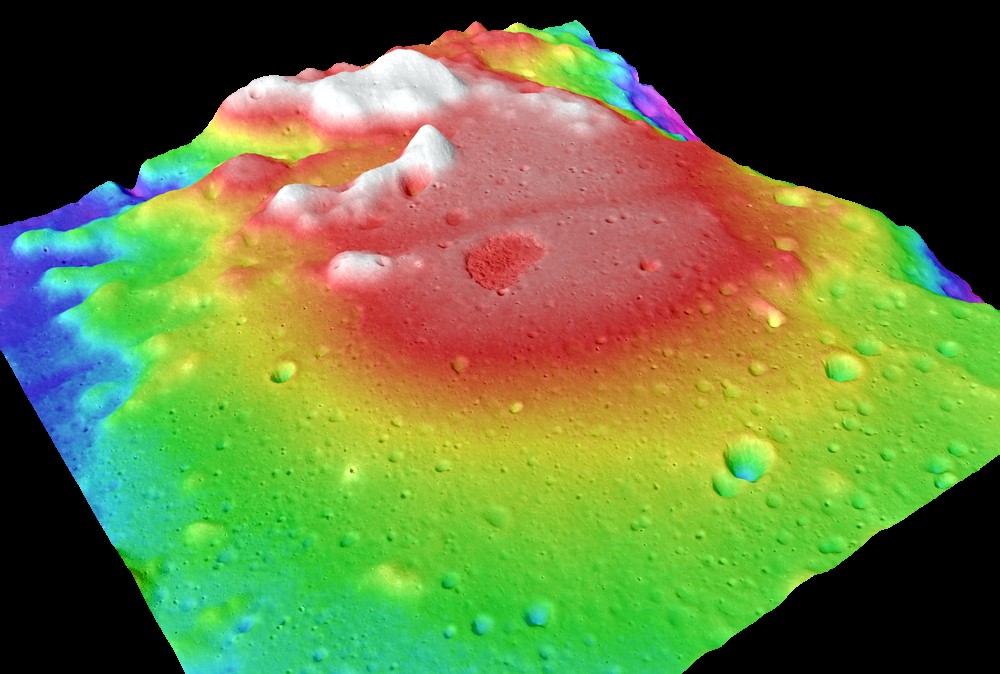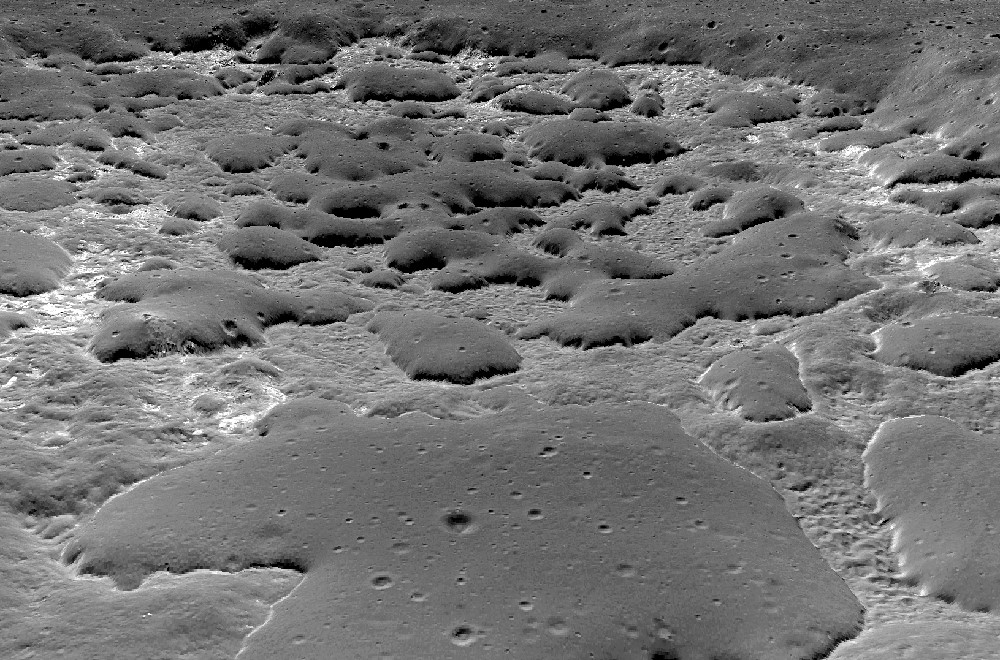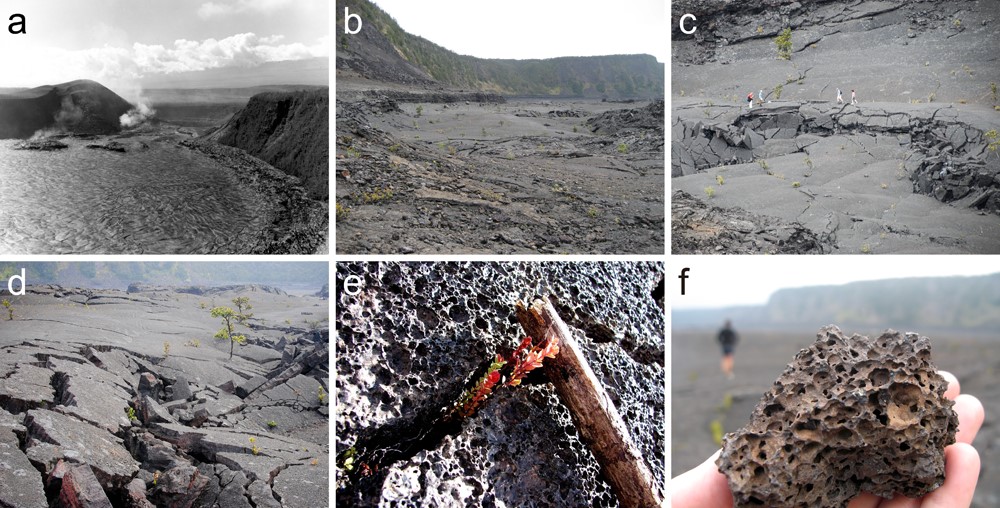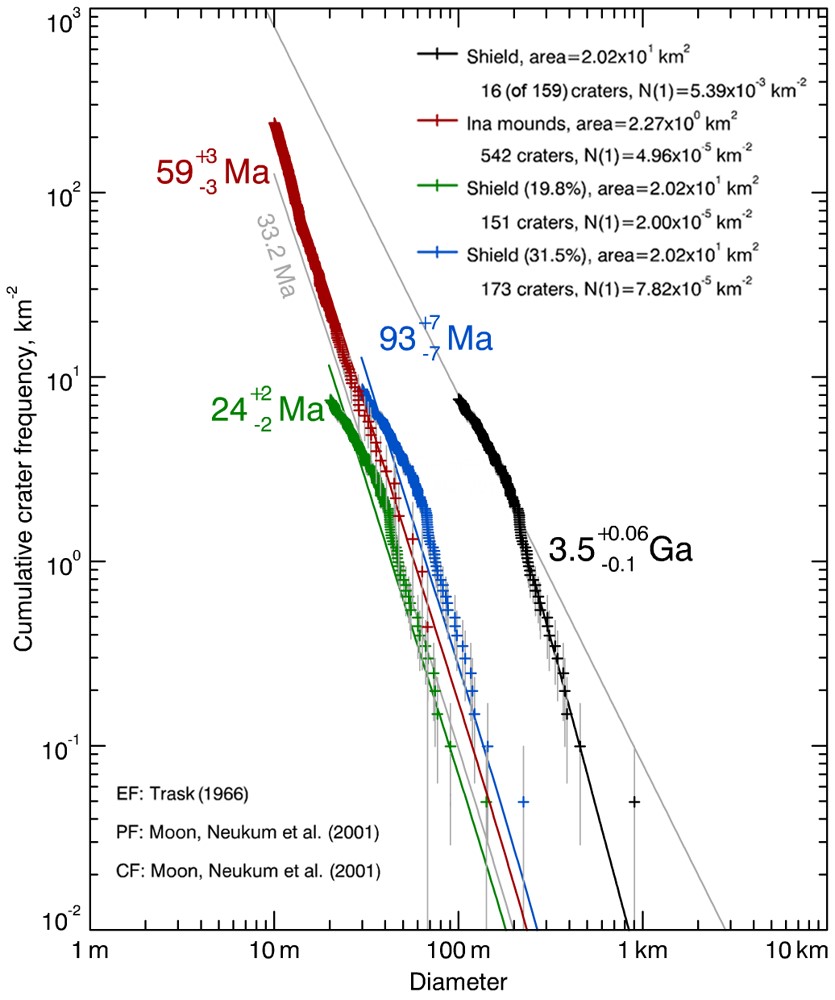Ina, a distinctive ~2 × 3 km D‐shaped depression, is composed of unusual bulbous‐shaped mounds surrounded by optically immature hummocky/blocky floor units. The crisp appearance, optical immaturity, and low number of superposed impact craters combine to strongly suggest a geologically recent formation for Ina, but the specific formation mechanism remains controversial.
Dr. Le Qiao of the planetary science group and others used high-resolution images and topographic data of the lunar surface to analyze the geological background information of the lunar Ina structure in detail, and reconfirmed that the Ina is a summit pit crater/vent on a small shield volcano ~3.5 billion years old. At the same time, combined with detailed geological feature analysis, earth analogue research and theoretical modeling analysis of volcanology, we believe that the Ina may be formed in the lava lake process of the top volcanic crater, accompanied by the eruption of late ultra-high porosity magmatic material. The ultra-high porosity of the final eruption product has a profound impact on subsequent impact cratering, space weathering, generation of lunar soils, topographical evolution and other geological transformations. And an abnormal statistical age of impact craters was produced. Accounting for these effects results in a shift of crater size‐frequency distribution model ages from <100 million years to ~3.5 billion years, contemporaneous with the underlying ancient shield volcano.
The research results were published in Journal of Geophysical Research: Planets.
Qiao, L., Head, J. W., Ling, Z., Wilson, L., Xiao, L., Dufek, J., Yan, J., 2019. Geological characterization of the Ina shield volcano summit pit crater on the Moon: Evidence for extrusion of waning-stage lava lake magmatic foams and anomalously young crater retention ages. Journal of Geophysical Research: Planets, 124(4), 1100-1140, doi: 10.1029/2018JE005841.
Link: https://agupubs.onlinelibrary.wiley.com/doi/abs/10.1029/2018JE005841
This study is supported by the Key Research Program of the Chinese Academy of Sciences, the National Natural Science Foundation of China, the China Postdoctoral Science Foundation, and Open Fund of State Key Laboratory of Information Engineering in Surveying, Mapping and Remote Sensing, Wuhan University.

Figure 1. 3D view of Ina small shield volcano. Based on Kaguya TC image and SLDEM2015 topographic data, the vertical exaggeration coefficient is 5.0.

Figure 2. 3D view of Ina small shield volcano. Based on LROC NAC image M119815703 and LROC NAC DTM terrain data, the vertical exaggeration coefficient is ~3.0.

Figure 3. A comparative study of Kīlauea Iki crater in Hawaii.

Figure 4. High-porosity basalt (Ina internal hill unit) image of the statistical dating of impact craters and impact craters.